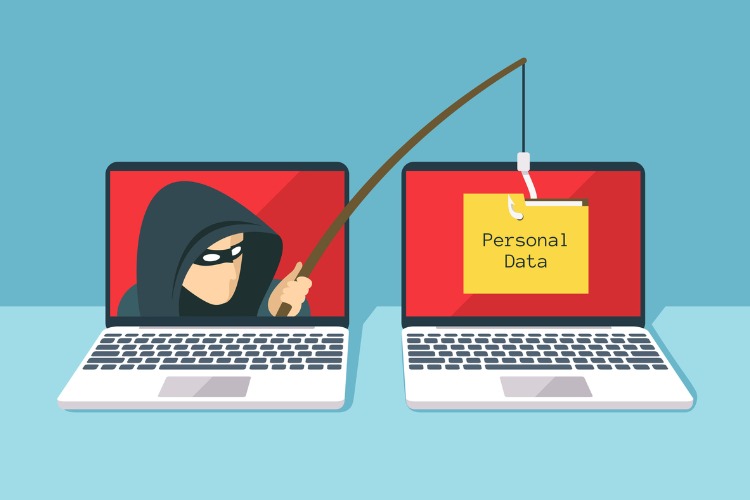How to Safeguard Yourself from Phishing Attacks: Practical Tips and Insights
In the age of digital communication, the sophistication of cyber scams has drastically evolved, with phishing being one of the most pervasive threats. Phishing scams exploit people's innate curiosity and urgency to get private information, including social security numbers, credit card numbers, and passwords. To successfully reduce risks, people and organizations need to stay vigilant and knowledgeable about the dangers of phishing. The chance of becoming a victim of these scams can be considerably decreased by being aware of phishing tactics and taking preventative action.
The repercussions of falling prey to a phishing scam can be profoundly detrimental, ranging from financial losses to severe personal and corporate data breaches. Recognizing the subtleties of phishing attacks is crucial as cybercriminals continuously refine their strategies to bypass traditional security measures. This comprehensive guide provides insights on identifying phishing attempts and offers actionable advice on securing your digital life against such threats.
What is Phishing?
Phishing is a cybercrime in which attackers impersonate legitimate entities to deceive individuals into divulging sensitive personal information. Originating in the early days of the Internet, phishing has flourished into a sophisticated criminal endeavor, capitalizing on the increasingly interconnected world. The term "phishing" itself is a homophone of "fishing," referring to the way phishers bait their victims into "biting" on fraudulent communications. A core component of phishing is social engineering, exploiting human psychology to trigger fear or excitement and compelling victims to act impulsively.
Identifying Phishing Attempts
Recognizing phishing attempts can prevent disastrous outcomes. Key indicators include unsolicited emails that induce panic, urgent calls to action, or requests for sensitive personal or financial information. Often, phishing emails come with poor grammar or spelling errors, a telltale sign of fraud. Hyperlinks that lead to unfamiliar websites or download requests should also raise red flags. Verify the legitimacy of any suspicious communication by contacting the entity directly through official channels. A classic tactic involves mimicking a bank's email to request account verification — an action no authentic bank would initiate via email.
Standard Techniques Used by Phishers
Cybercriminals employ numerous strategies, including email spoofing, which manipulates email headers to make messages appear as if they originate from a reputable source. Spear phishing targets specific individuals, tailoring messages using personal information gathered from social engineering to increase credibility and effectiveness. Meanwhile, smishing uses text messages to distribute deceptive links or malware. Each technique exploits the fundamental aspects of human psychology, including trust and urgency, to lure victims into compliance. Discerning these techniques helps in the development of both personal and organizational defense strategies.
Consequences of Falling for Phishing Scams
The impacts of phishing on victims can be deeply damaging, encompassing not only financial loss but also compromised personal identity privacy. A recent study found that phishing attacks increased by 20% the previous year, highlighting the necessity of increased cybersecurity awareness. Victim stories frequently demonstrate how swiftly phishing can ruin lives, from depleted bank accounts to damage to one's reputation after private information is shared on the dark web. The business costs are direct monetary losses, government fines, and declining consumer confidence.
Protecting Yourself: Practical Tips
- Employ unique, robust passwords for all your online accounts, integrating two-factor authentication wherever possible for an additional layer of security.
- Ensure all software and antivirus solutions are up-to-date to prevent the latest cyber threats.
- Regularly educate yourself and your family or colleagues about the evolving tactics used in phishing to stay informed and empowered.
Role of Technology in Preventing Phishing
Artificial intelligence and machine learning advancements have bolstered the capability to detect and neutralize phishing threats by identifying anomalous behaviors or patterns in digital communications. Tools are now available for comprehensive real-time threat detection and blocking malicious content before it reaches potential victims. Businesses can significantly benefit from deploying these technologies in their cybersecurity frameworks while emphasizing security education to enhance awareness at all organizational levels. These tools can also be integrated with existing security systems, providing a seamless defense mechanism that continuously adapts to evolving threats. Additionally, AI-powered systems can analyze vast amounts of data, detecting phishing attempts at a scale and speed that would be impossible for human teams alone. As these technologies mature, they will play an increasingly critical role in fortifying defenses against increasingly sophisticated cyberattacks.
Critical Takeaways for Individuals and Businesses
The onus of cybersecurity lies on both individuals and enterprises to stay alert against phishing and other cyber threats. Adopting a proactive security mindset, prioritizing cybersecurity tools, and investing in continuous education are fundamental steps. Encourage a culture of knowledge-sharing within communities to amplify defense mechanisms. Leveraging collaborations with cybersecurity experts aids in constructing a robust defense system amid a challenging digital landscape.
Conclusion
In conclusion, safeguarding against phishing attacks requires awareness, vigilance, and the adoption of advanced technologies. Both individuals and businesses must remain proactive in recognizing the signs of phishing and adopting strategies to prevent these attacks from succeeding. Regular education, strong password practices, and multi-layered security measures like two-factor authentication can significantly reduce the risk of falling victim to phishing. Embracing cutting-edge technologies such as AI and machine learning can further enhance defense mechanisms by detecting and blocking threats in real time. Additionally, fostering a culture of security awareness within organizations ensures that everyone remains informed and prepared. By integrating these proactive measures, individuals and businesses can better protect themselves from the growing menace of phishing scams and secure their digital environments for the future.

